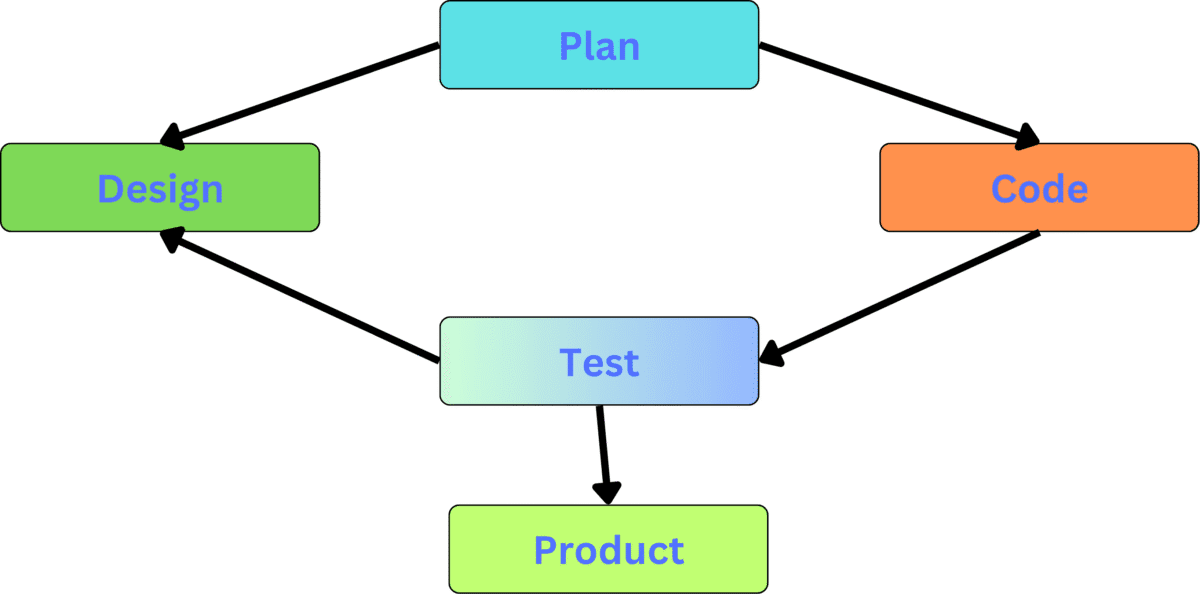Introduction
Extreme Programming (XP) is one of the most influential and extensively adopted approaches within the Agile family. Extreme Programming (XP) is one of the most influential and extensively adopted approaches within the Agile family.
In the mid-1990s, Kent Beck developed Extreme Programming while working on the Chrysler Comprehensive Compensation System (C3) project. The first edition of Kent Beck’s book “Extreme Programming Explained: Embrace Change” was released in 1999. The demand for a more adaptable, cooperative, and responsive development process—especially in projects with constantly shifting requirements, led to the creation of XP. The idea of using well-known software engineering techniques and pushing them to their limits is where the term “Extreme” originates.
XP encourages strong cooperation between developers and clients, frequent releases, and tight feedback loops. Five fundamental qualities are emphasized by XP: respect, communication, courage, simplicity, and feedback. Twelve techniques, including pair programming, test-driven development (TDD), continuous integration, refactoring, and short, frequent releases, are used to put these beliefs into effect. The presence of an on-site customer who collaborates directly with the team to prioritize features and define needs is one of XP’s distinguishing characteristics.
Unlike traditional approaches, which require careful planning and documentation upfront, XP welcomes change. It pushes teams to deliver functional software fast and react to continual input. Accepting client feedback is essential for continued improvement. After collecting input, the development team works on it again and releases a new software version till the consumers are pleased. This makes XP especially useful for projects whose requirements are likely to change.

The core values of Extreme Programming (XP)
Communication
In Extreme Programming, communication is regarded as critical for team success. Software development has numerous moving elements, and a lack of communication can result in misunderstandings, problems, and delays. XP promotes continuous, open, and honest communication among team members, which includes developers, testers, and consumers. Practices like as pair programming, daily stand-up meetings, and collaborative planning keep everyone informed and aligned. Good communication facilitates knowledge sharing, issue solving, and fosters a culture of transparency. It also decreases the danger of redundant effort, misaligned expectations, and missing requirements, making the development process more efficient and successful.
Simplicity
XP emphasizes the notion of simplicity by motivating teams to do only what is essential, resulting in just enough functionality to suit present needs. The goal is to prevent excessive engineering and speculative design. Developers are encouraged to design the simplest solution that works, making the code easier to understand, test, and maintain. Simplicity lowers the cost of future improvements and decreases potential faults. It also allows teams to respond faster when new requirements arise. Refactoring and frequent feedback help keep the software clean and extensible without adding additional complexity.
Feedback
Feedback is a core element in XP, allowing for ongoing learning and progress. Extreme Programming focuses on rapid, frequent input from automated tests, users, and team members to steer development. Practices like as Test-Driven Development (TDD), continuous integration, and short releases facilitate early and frequent feedback collection. Feedback enables teams to quickly detect problems, change course, and ensure that the program satisfies user needs. It decreases the likelihood of creating the incorrect product or introducing costly faults. Regular input ensures that development is consistent with both technical and business objectives throughout the project’s lifecycle.
Courage
Courage in Extreme Programming (XP) implies doing the correct thing, even if it is tough. Developers are encouraged to report issues, remove poor-quality code, and refactor as needed. It takes bravery to question assumptions, change course based on feedback, or accept mistakes. XP fosters an environment in which risk-taking and responsible decision-making are encouraged. For example, rebuilding a piece of the codebase to improve design or simplify functionality is viewed positively rather than negatively. Courage enables teams to maintain a high level of quality while remaining adaptable and willing to change.
Respect
Respect underpins all interactions within an Extreme Programming team. Every team member, regardless of role or experience level, is respected for what they provide. Respect fosters collaboration, trust, and psychological safety by enabling people to share ideas, ask questions, and provide constructive comments without fear. It also entails honoring the code, the customer’s requirements, and the team’s common goals. When there is respect, pair programming becomes more successful, problems are resolved constructively, and productivity increases. A courteous workplace encourages developers to take ownership and pleasure in their work, which improves overall project outcomes.
The principles of Extreme Programming (XP)
XP is guided by various principles, which determine how the values are applied.
- Rapid input: The sooner input is received, the quicker issues can be resolved.
- Assume Simplicity: Create the simplest solution that fits the present criteria.
- Incremental Change: Implement tiny changes one at a time, which are easier to test and maintain.
- Accept Change: Recognize that requirements will change and adjust the design and code accordingly.
- Quality Work: Aim for high-quality work throughout the development process.
When to Use Extreme Programming (XP)
When
- Requirements are likely to change frequently.
- The team is small (typically less than 10 developers).
- The customer is available and actively engaged.
- The project requires high-quality, bug-free code.
- Rapid feedback and incremental delivery are needed.
Benefits and Drawbacks
Benefits
- Enhances code quality through test-driven development and continual refactoring.
- Encourages frequent client participation, ensuring that software fulfills actual demands.
- Continuous integration and testing help to spot bugs early on.
- Improves team collaboration and communication through pair programming and shared responsibilities.
- Small, frequent releases allow for the rapid delivery of working software.
- Reduces overengineering by focusing on basic, current requirements.
- Adapts quickly to changing client demands and objectives.
- Improves team morale by promoting a consistent pace and respect.
- Promotes knowledge exchange, minimizing reliance on individual developers.
- Encourages rapid feedback loops for speedier route corrections.
Drawbacks
- Requires significant customer participation, which may not always be practicable.
- Some developers find pair programming exhausting and oppose it.
- Scaling is difficult with large teams or complex projects.
- Minimal documentation may cause problems with maintenance and onboarding.
- Maintaining XP practices regularly requires a high level of discipline.
- Refactoring without sufficient understanding can result in new issues.
- Some approaches, such as TDD and CI, necessitate time and technical preparation.
- Not appropriate for teams operating in highly regulated industries.
- If user stories are not tightly controlled, it is possible that scope creep will occur.
- If the team is unfamiliar with XP practices, it may be inefficient.


